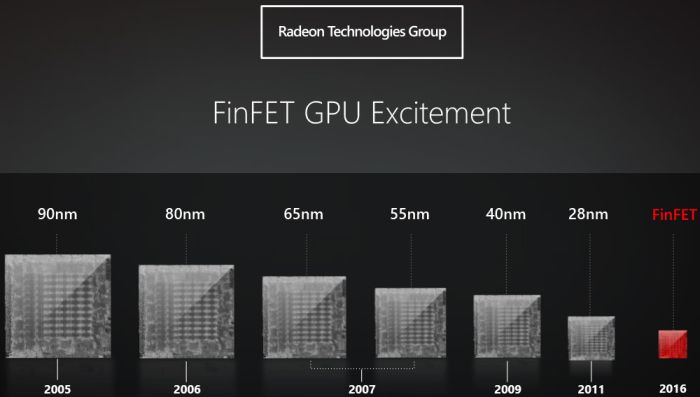OOPS! You forgot to upload swfobject.js ! You must upload this file for your form to work.
Once again about the energy efficiency of Polaris and HBM Memory prospects
![]()
|
xtreview is your : Video card - cpu - memory - Hard drive - power supply unit source |
|
|||
|
|
||||
 Recommended : Free unlimited image hosting with image editor
Recommended : Free unlimited image hosting with image editor
|
xtreview is your : Video card - cpu - memory - Hard drive - power supply unit source |
|
|
|
|
||
|
Xtreview Support  N-Post:xxxx Xtreview Support        |
ONCE AGAIN ABOUT THE ENERGY EFFICIENCY OF POLARIS AND HBM MEMORY PROSPECTS |
| Please Feel Free to write any Comment; Thanks  |
AMD again fantasized about the monolithic crystal processors EPYC (2017-08-24)
THE HEAD OF NVIDIA ONCE AGAIN ANNOUNCED THE SUPERIORITY OF THE GPU OVER THE TPU (2017-08-14)
Tired of the crypto currency shop again began to sell video cards (2017-08-10)
Non-targeted use of Radeon Vega Frontier Edition again spawned game tests (2017-07-13)
Again we are studying the layout of the motherboard with the possibility of connecting 13 video cards (2017-07-07)
NVIDIA again told about hidden reserves Volta (2017-06-22)
In Origin, Medal of Honor is again distributed free of charge (2017-06-20)
AMD once again declares that it did not reduce prices for Ryzen processors (2017-06-10)
NVIDIA again demonstrates a system with eight Tesla accelerators using HBM2 (2017-06-01)
Once again we remember what factors push NVIDIAs revenue up (2017-05-24)
New patch for Mass Effect: Andromeda again rules the animation and makes big changes to the network mode (2017-05-11)
Intel again speaks about the geography of its enterprises (2017-04-18)
HP Inc managed to again become the largest PC manufacturer (2017-04-12)
Intel will continue to develop hardware-based methods of protection against viruses (2017-04-06)
Release of Sniper Ghost Warrior 3 again postponed (2017-03-06)
Arctic and Socket AM4 again about the compatibility of cooling systems (2017-02-23)
AMD Ryzen 7 1700X processor again tested in synthetic benchmarks (2017-02-22)
Shares of Samsung are getting cheaper against the background of rumors about the impending arrest of the head of the company (2017-02-15)
Intel is preparing to campaign against AMD Ryzen (2017-02-10)
The release of South Park The Fractured again postponed (2017-02-10)
![]()
To figure out your best laptops .Welcome to XTreview.com. Here u can find a complete computer hardware guide and laptop rating .More than 500 reviews of modern PC to understand the basic architecture


7600gt review
7600gt is the middle card range.
We already benchmarked this video card and found that ...

 geforce 8800gtx and 8800gts
geforce 8800gtx and 8800gts  Xtreview software download Section
Xtreview software download Section  AMD TURION 64 X2 REVIEW
AMD TURION 64 X2 REVIEW  INTEL PENTIUM D 920 , INTEL PENTIUM D 930
INTEL PENTIUM D 920 , INTEL PENTIUM D 930  6800XT REVIEW
6800XT REVIEW  computer hardware REVIEW
computer hardware REVIEW  INTEL CONROE CORE DUO 2 REVIEW VS AMD AM2
INTEL CONROE CORE DUO 2 REVIEW VS AMD AM2  INTEL PENTIUM D 805 INTEL D805
INTEL PENTIUM D 805 INTEL D805  Free desktop wallpaper
Free desktop wallpaper  online fighting game
online fighting game  Xtreview price comparison center
Xtreview price comparison center Lastest 15 Reviews


Rss Feeds
Last News
- The new version of GPU-Z finally kills the belief in the miracle of Vega transformation
- The motherboard manufacturer confirms the characteristics of the processors Coffee Lake
- We are looking for copper coolers on NVIDIA Volta computing accelerators
- Unofficially about Intels plans to release 300-series chipset
- The Japanese representation of AMD offered monetary compensation to the first buyers of Ryzen Threadripper
- This year will not be released more than 45 million motherboards
- TSMC denies the presentation of charges from the antimonopoly authorities
- Radeon RX Vega 64 at frequencies 1802-1000 MHz updated the record GPUPI 1B
- AMD itself would like to believe that mobile processors Ryzen have already been released
- AMD Vega 20 will find application in accelerating computations
- Pre-orders for new iPhone start next week
- Radeon RX Vega 57, 58 and 59: the wonders of transformation
- ASML starts commercial delivery of EUV-scanners
- The older Skylake processors with a free multiplier are removed from production
- Meizu will release Android-smartphone based on Helio P40
- AMD Bristol Ridge processors are also available in American retail
- The fate of Toshiba Memory can be solved to the next environment
- duo GeForce GTX 1080 Ti in GPUPI 1B at frequencies of 2480-10320 MHz
- New Kentsfield overclocking record up to 5204 MHz
- Lenovo released Android-smartphone K8

HALO 3 HALO 3 - Final Fight!

PREY Prey is something you don t often see anymore: a totally unigue shooter experience.

computer news computer parts review Old Forum Downloads New Forum Login Join Articles terms Hardware blog Sitemap Get Freebies




